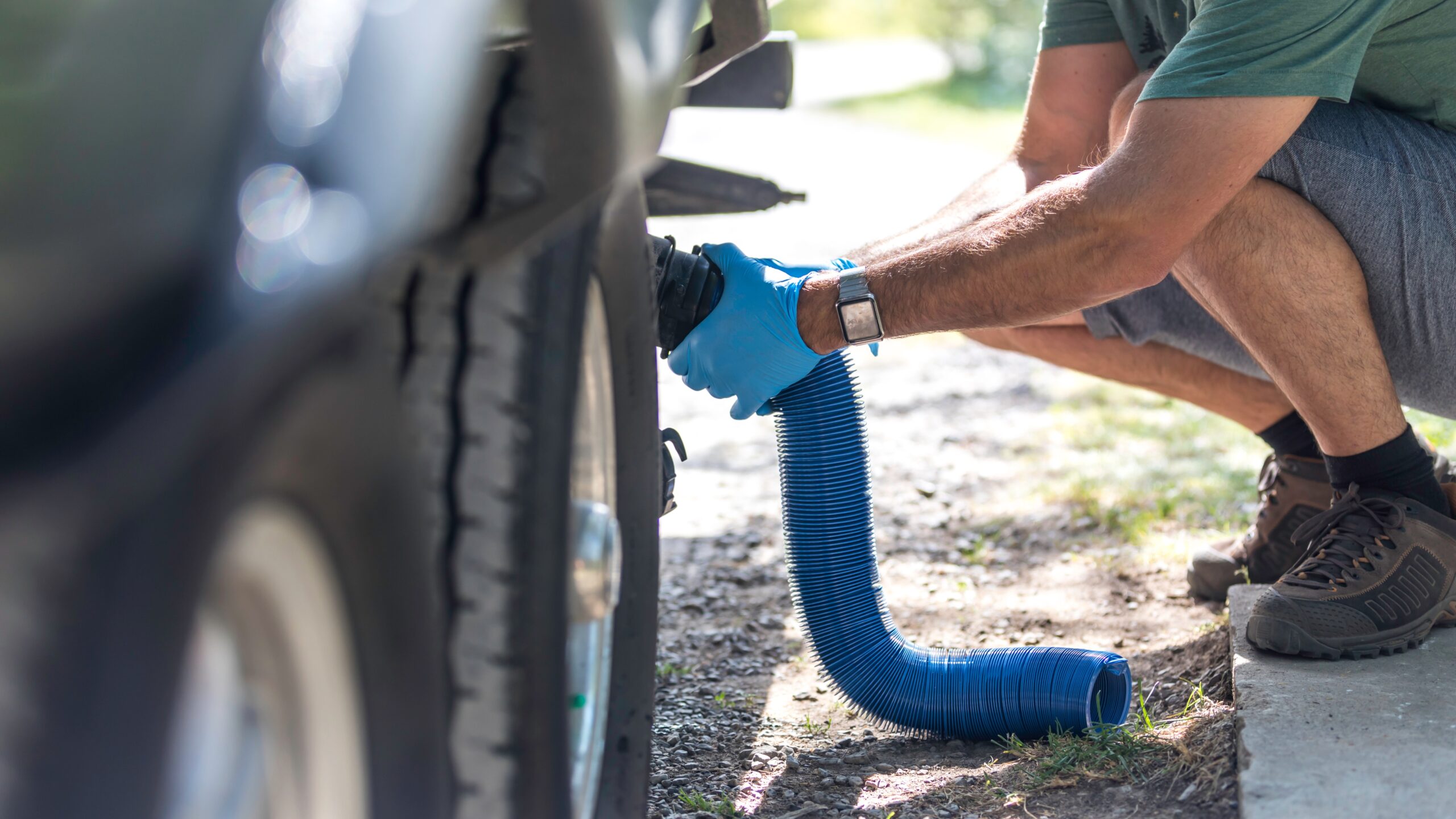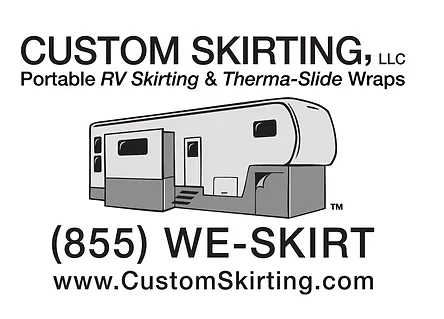
How RV Plumbing Works: Complete Guide
Table of contents
In the world of recreational vehicles (RVs), a well-functioning plumbing system is essential for a comfortable and enjoyable travel experience. Understanding RV plumbing, including its parts, fittings, and system basics, is crucial for maintaining this vital aspect of your vehicle. Whether you’re new to RVing or looking to enhance your knowledge, this guide will cover everything you need to know about RV plumbing to keep your water system running smoothly on the road.
RV plumbing ensures access to essential amenities such as clean water for drinking, cooking, and bathing. Without a properly functioning plumbing system, RVers may encounter inconveniences and potential issues during their trips. Therefore, it’s important to grasp the fundamentals of RV plumbing, including its components, fittings, and maintenance practices.
This comprehensive guide will delve into various aspects of RV plumbing, from understanding the system basics to identifying essential parts and fittings. By the end, you’ll be equipped with the knowledge needed to maintain and troubleshoot your RV’s plumbing system effectively. Let’s dive into the world of RV plumbing and discover how to ensure a reliable water supply for your travels.
How Does RV Plumbing Work?
The plumbing system in an RV is designed to provide essential water services similar to a home but with some unique considerations due to its mobile nature. Understanding how this system operates can help RV owners troubleshoot issues and maintain their vehicles effectively.
Water Source
Unlike traditional homes connected to municipal water supplies, RVs rely on onboard water tanks for freshwater storage. These tanks come in various sizes depending on the RV class and can hold anywhere from 20 to over 100 gallons of water. Water is typically filled through an external port using a dedicated hose.
Water Pump
Once the freshwater tank is filled, an RV water pump pressurizes the water system, allowing it to flow through the plumbing lines when needed. The water pump operates automatically, activating when a faucet is turned on to deliver water at the desired pressure. Most modern RVs are equipped with efficient and quiet water pumps that ensure consistent water flow throughout the vehicle.
Drainage System
Used water from sinks, showers, and the kitchen drains into gray water-holding tanks, while wastewater from the toilet (black water) is directed to a separate black water tank. Both tanks are equipped with sensors to monitor fluid levels and require periodic emptying at designated dump stations or RV-friendly campgrounds.

RV Plumbing Basics
The plumbing system in your RV functions similarly to the plumbing in a traditional home but with some unique considerations due to its mobile nature. Understanding these basics is essential for maintaining and troubleshooting your RV’s water system effectively.
Water Storage and Pump
RVs typically have onboard water storage tanks that hold freshwater for use while camping. The size of these tanks can vary based on the RV’s class and design, ranging from smaller capacities in campers to larger tanks in motorhomes. The water pump in your RV pressurizes the water system, allowing water to flow through the plumbing when needed. It activates automatically when you open a faucet or use a plumbing fixture.
- Class A: Average capacity of 75-100 gallons
- Class B: Average capacity of 20-40 gallons
- Class C: Average capacity of 50-75 gallons
Hot Water Heater
To provide hot water for showers and sinks, RVs are equipped with water heaters. These heaters can be powered by electricity, propane, or a combination of both. The water heater heats water stored in a tank and delivers it to faucets and showerheads when hot water is needed. Regular maintenance of the water heater is important to ensure optimal performance and longevity.
Plumbing Fixtures
RVs come equipped with standard plumbing fixtures similar to those in homes, including sinks, showers, toilets, and faucets. These fixtures connect to the water system via flexible tubing and are designed to conserve water, given the limited onboard storage capacity of RVs.
Water Filtration and Quality
Many RVs are equipped with water filtration systems to ensure clean, potable water for drinking and cooking. These systems help remove impurities and sediment from the water source, providing a more enjoyable camping experience. It’s important to regularly replace water filters and monitor water quality to prevent issues with the plumbing system.
Winterization
In colder climates or during winter storage, RV plumbing must be properly winterized to prevent freezing and damage. This involves draining the water system, adding antifreeze to plumbing lines, and insulating vulnerable components. Winterizing your RV’s plumbing system is crucial for protecting it from freezing temperatures that can cause costly damage.
RV skirting plays a critical role in winterization by providing insulation and heat retention around the underside of your RV. It helps maintain stable interior temperatures, preventing frozen pipes and plumbing components. Skirting also protects against wind chill reduces heat loss, and minimizes moisture and condensation inside the RV. By installing quality skirting, you can enhance comfort, improve energy efficiency, and safeguard your RV’s plumbing system during colder months.
Maintenance and Care
Regular maintenance of your RV’s plumbing system is essential to prevent leaks, clogs, and other issues. Inspect plumbing connections, fixtures, and seals regularly for signs of wear or damage. Keep an eye on water usage and conserve water when possible to extend the time between refills of your freshwater tank.
RV Waste System

Gray vs. Black Water
Understanding the difference between gray water and black water is crucial for proper waste management in your RV. Gray water comes from sinks, showers, and other non-toilet drains, containing soapy water and minimal contaminants. Black water, on the other hand, is from the toilet and contains human waste and toilet chemicals.
Properly managing gray and black water involves different disposal methods. Gray water can sometimes be safely disposed of in specific locations or absorbed into the ground (check local regulations). However, black water must always be disposed of at designated dumping stations to ensure sanitary handling.
How RV Toilets Work
RV toilets are designed to use minimal water compared to traditional toilets, which conserves water and reduces the strain on your RV’s water supply. Using RV-friendly toilet paper is essential to prevent clogs in the plumbing system. This specialized toilet paper breaks down more easily and is less likely to cause blockages.
Regular maintenance of your RV toilet is crucial for trouble-free operation. This includes checking for leaks, ensuring proper seals, and keeping the toilet clean and sanitized. Performing routine inspections and maintenance will help prevent issues and ensure that your toilet functions properly throughout your travels.
Where to Dump Tanks
RV-compatible campgrounds typically offer dumping stations where you can empty your waste tanks. These stations have designated areas equipped with dump stations and water hookups. To empty your tanks, use a high-quality RV sewer hose to connect your RV’s waste tank to the dumping station.
The process is straightforward: attach one end of the sewer hose to your RV’s sewer valve and the other end to the dumping station’s inlet. When you open the waste tank valve, gravity will allow the contents to flow through the hose and into the dump station’s sewer system. Remember to thoroughly rinse and clean your sewer hose after use to maintain hygiene and prevent odors.
Experience the Nation’s #1 RV Skirting Solution!
RV skirting is crucial for maintaining comfort and protecting your RV, especially during winter. It acts as a barrier against cold winds, preventing heat loss and reducing the strain on your heating system. Skirting also helps prevent frozen pipes by insulating the underside of your RV, keeping the plumbing system safe from freezing temperatures. Additionally, it blocks out snow and moisture, reducing the risk of moisture-related damage and mold growth. Invest in quality skirting to enhance insulation, protect your investment, and extend your RV’s lifespan.
Experience the ultimate in RV protection with our Custom Skirting solution. Our tailored skirting system seals out water, snow, and wind effectively, ensuring unparalleled durability and convenience. Don’t settle for less—get Custom Skirting today and discover the difference for yourself!
